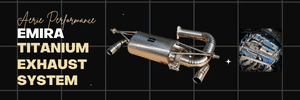Right, thanks. It's just that there is very big difference between the last photo you posted (a few posts up) and the ones from the opening post of the thread. Both appear to be sun (and shadow). Was wondering if that was down to camera or not. But you're saying they're both truly realistic?
My monitor is calibrated by the way. Either way, thank you for your service

I have a calibrated monitor too, and from having looked at many many photos of Emiras in the last almost 2 years, the two colors that seem to be the most affected by the color temperature of light, are Magma and Nimbus. They are both metallic paint, and the metallic flecks in the paint seem to have color bounce characteristics of their own, independent of the colored translucent layer above them.
Sunlight has all the color frequencies in it, but that is affected by atmospheric conditions. The color of sunlight at high noon is very different than it is at what's known as the "golden hour". Here's a brief excerpt from Wikipedia that describes the effect:
"The color temperature of daylight varies with the time of day. It tends to be around 2,000 K shortly after sunrise or before sunset, around 3,500 K during "
golden hour", and around 5,500 K at midday. The color temperature can also change significantly with altitude, latitude, season, and weather conditions."
As a result, even if a car is outside, the color of an exotic metallic paint can change appearance quite a lot depending on time of day, where it is (altitude, latitude), season which is affected by the tilt of the earth, and weather conditions. High noon in London is going to look different than high noon in Miami, and both will change depending on whether it's spring, summer, fall or winter.
In the image below you can see how the wall, which is the exact same color paint all across it, changes its color appearance dramatically depending on the color temperature of the light sources.
What we perceive as color then, isn't because an object actually is that color (because it isn't), it's because the surface of that object is rejecting certain color frequencies of radiant light, and those are bouncing off and towards our eyes. When we see red, it's because that particular frequency has bounced much more than others, so it appears red.
Now imagine you have a metallic paint, where the metallic flecks have their own color temperature bounce characteristics, and on top of that is a translucent layer that also has its own color temperature bounce characteristics. Those two characteristics are working together to create a constantly shifting color profile depending on the sources of light, the angle, etc.
If an object is inside under artificial lighting, those lights also have their own color temperature characteristics, and unless they are specifically created to have a high color reproduction index (CRI), they're going to color bias the appearance of whatever they're illuminating.
Here you can see in the room set images, how Nimbus Grey could go from being silvery grey on the right, to begin gaining warm, bronze overtones as you move to the left, depending on lighting conditions. Same thing would happen to red, going from bright red on the right, to a darker, more of an almost brown red towards the left.
This gives you a rough overview of the color temperatures of various light sources.
So the short answer to your question:
"
Can someone describe what the Magma actually looks like "in the flesh" ?
In many pictures it looks bright/brilliant red which I absolutely love. In many other pictures it looks more like a brownish-red which I definitely do not. Does it change that much under the lighting?"
is there is no "actual" color Magma is going to look like, and yes it can and will change that much under lighting. Same for Nimbus.








